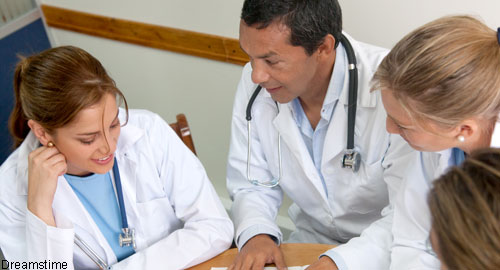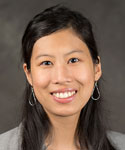 With constant changes in the healthcare, political and social landscapes, it’s important modern medical educational programs prepare students to practice in real-world settings, while providing them with core skills and enabling them to participate in lifelong learning.
With constant changes in the healthcare, political and social landscapes, it’s important modern medical educational programs prepare students to practice in real-world settings, while providing them with core skills and enabling them to participate in lifelong learning.
As a faculty member at the University of Wisconsin School of Medicine and Public Health, Tiffany Lin, MD, focuses on such outcomes in two roles—as the assistant block director of the medical school curriculum and as the associate director of the rheumatology fellowship program.
The Curriculum
In October 2016, when Dr. Lin took on the first role, the institution embarked on its first year of a redesigned medical school curriculum—an initiative that took more than 200 individuals to develop over a decade.
“Instead of the traditional two years of classroom teaching followed by two years of clinical experiences, the new curriculum has an integrated approach that incorporates basic science and clinical medicine at every step,” Dr. Lin says. “The curriculum is designed to provide students with core knowledge, teach them how to be lifelong learners and equip them to solve challenging problems.”
The curriculum is divided into three phases: Phase 1 replaces traditional classroom teaching with interactive team-based discussions and self-paced, online modules. Students participate in patient-centered education cases in small groups during Phase 1, which comprises the first 18 months of the program.
“The cases help [the students] connect foundational concepts to clinical scenarios they may encounter as physicians,” Dr. Lin explains. In small groups, students identify the learning objectives for each case. After reaching a consensus regarding the learning objectives, they individually conduct research to understand and learn the objectives behind the case. Then, the entire group reconvenes and the faculty member reveals the intended learning objectives and the group shares what they’ve learned. “The majority of the time, the students are successful in figuring out the objectives on their own,” Lin says.
“Working in groups helps students learn and approach problems in a more comprehensive way, and teaches them teamwork, communication and problem-solving skills,” Dr. Lin says. “Approaching medical school from a clinical case perspective more accurately reflects real-life approaches to clinical cases.” The curriculum also requires more online coursework than traditional classroom learning, which allows students to learn at their own pace.
Specialties: Another change is the new program’s greater focus on rheumatology. Previously, students studied rheumatology for only three days during the first two years of their medical education. Now, related specialties are integrated. Rheumatology is part of an eight-week block, which also includes immunology, dermatology and infectious diseases, conducted during the first two years.
“Students can make connections between rheumatology and other areas of medical knowledge to show that it’s relevant in cases beyond rheumatology,” Dr. Lin says. “We hope to engage more medical students by doing this.”
In Phase 2, the next 12 months, additional aspects of rheumatology are introduced through integrated clinical settings. “Students continue to engage in expanding their knowledge of basic science through online modules and lectures,” Dr. Lin says. “Compared [with] a traditional curriculum, this phase continues to place a large emphasis on the foundation of basic science while students complete their clinical rotations.”
Phase 3, the final 18 months of the program, involves further clinical experiences tailored to each student’s career and specialty interests. Students can pursue electives and opportunities for further development in their desired specialty. Students also take basic science electives geared toward their specialty-specific interests. This aspect is in contrast to a traditional curriculum, in which students may continue to choose various clinical rotations of interest.
New Accreditation Process
As the associate director for the rheumatology fellowship program, a role she assumed in August 2016, Dr. Lin is deeply involved in preparing for a new form of accreditation by the Accreditation Council for Graduate Medical Education (ACGME), which is responsible for accrediting the majority of graduate medical training programs for physicians in the U.S. In the past, ACGME certified programs by conducting site visits every two to five years, evaluating whether an institution complied with ACGME common program requirements and specialty specific requirements. If programs did not comply or make the advised changes, they were forced to close.
The new program, Next Accreditation System, moves more of the evaluation process from ACGME review committees to a program’s stakeholders (i.e., its faculty members, residents and fellows).
“It requires us to go through a multi-step, self-evaluation process,” Dr. Lin says. “This [process] helps identify strengths and areas to improve upon. Although the previous process ensured that the [medical education] programs complied with minimum requirements, it wasn’t individualized. The new self-study program recognizes that programs focus on different areas—whether academics, clinical practice or research—and encourages programs to strive for excellence in their own areas of focus.”
ACGME began the pilot accreditation program in 2015, and accreditation is now required only every 10 years. Only a few rheumatology programs have completed the new accreditation process.
“It’s a hot topic at our program and many others, because we aren’t sure what to fully expect until we go through it once,” Dr. Lin concludes.
Karen Appold is a medical writer in Pennsylvania.



